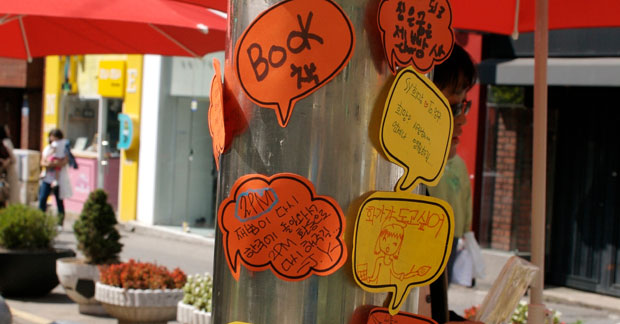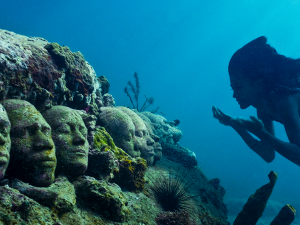
Jayne Gorman on Google +
Before you can start approaching brands or travel PR to work together you need to know who you are. More importantly you need to understand what you can offer a brand and provide stats and case studies to back that up. All this needs to be concisely and visually presented in a Media Kit or Press Pack.
Getting Started
Before you start, think about what the strengths of your site are because this is what you will lead with and need to provide proof of in your Media Kit. Whether it is page views, clicks throughs, reader influence, engagement or reach – work out what you are best at and in what areas you can offer a brand the most return.
Concept
I open my Media Pack with a short paragraph about who I am. What can readers expect to find when they come to your site? Why do they come to your site in the first place? What is the style and tone of the content?
The Audience
Explain who are you speaking to and how you know this. For example, using a combination of Alexa.com, Google Analytics and conversations with the readers themselves, I know that my audience is mainly female, aged 25 to 35, and from the UK.
By looking at audience behaviour on Google Analytics and feedback from readers themselves you can build an idea of what readers like. I include quotes from readers to back this up;
“Just wanted to drop you a note to say your blog is excellent. I stumbled across it by accident while looking for a holiday but I am so glad I did as it is thoroughly entertaining and informative.”
Influence
Whilst working for a brand on blogger outreach one of the key factors we considered was the influence of the writer over the reader. We know that sometimes stats are not the full picture. Many brands would rather work with a blogger that has a dedicated, loyal following of 100 people than thousands of readers who are not engaged or influenced by the content they read.
Your Media Kit is a chance for you to demonstrate how your readers are engaged and in what way. Have readers booked hotels after you reviewed them? Have you bought a destination to your reader’s attention that they didn’t know about before? Have you made your readers reassess what they thought they knew about a place?
Depending on how your readers communicate with you include examples i.e. screenshots of tweets and extracts of emails. Not all readers like to leave comments on the blog itself so this information will not be readily available to brands looking at your site. Collate it for your Media Kit instead.
Stats
Regardless of what stage you are at in your blogging you will need to provide stats to potential sponsors. Make sure you build up a full picture of your site. Numbers to consider including are:
Monthly page views
Monthly unique views
Google page rank
Social Media Following: twitter, Facebook, instagram, pinterest, Google plus
RSS/email subscribers
Audience demographic
Make sure you keep these figures up to date. The nature of social media is such that these numbers are probably growing all the time. Update your kit at least once a month to make sure it is shown in the best light.
You may want to include screenshots from Google Analytics to show where these figures come from, but that is up to you. If a brand want to see more they can always ask.
Why Work With You
I recommend including a short paragraph at this stage spelling out clearly why someone should work with you. What do you offer that sets you apart from other bloggers? Here you could also include names of brands that you have already worked with.
Case Studies
This is the section where you add colour and evidence to everything you have said before. If you have already been on a press trip or worked with a brand on a sponsored stay show here what the results were. Include links to the content, screenshots of the response on twitter, overview of Facebook engagement and the response from readers. If your project had a set hashtag include the reach and engagement figures using a tool such as tweetreach.
“During a 5day blog trip to El Gouna my tweets generated a reach of 25,300 and exposure of to over 345,000 twitter users. I generated 120 tweets about the destination, of which 24 were retweets and 44 mentions.”
As you work on a wider range of projects include a variety of case studies i.e. one press trip, one sponsored stay, a partnership with an airline.
As a courtesy I recommend asking permission from the brands/sponsors involved before using them as a case study. Most of the data used is in public domain anyway but it’s always better to ask just in case there are any issues.
Testimonials
If a project has gone particularly well I ask the brand or PR for a short testimonial quote to include in the pack. If you are lucky you may get things like this coming through:
““Jayne is an absolute joy to work with. Why? Firstly her blog is inspirational, award winning and above all a great authentic read. That means that those destinations and attractions she reviews enjoy a real all round “under the skin” treatment that is great for her readers and for those that work with her….”
If you haven’t worked with a brand in this way yet, then you could include a testimonial from a reader instead.
“I just wanted to write a quick note to say how much I have been enjoying your blog! I have only recently started reading it after a friend recommended it to me – and I love it! One of the first posts I read, ‘Journey to the Red Centre’ actually made me a little teary. (I know a little embarrassing) Being an Australian myself and having been away from home for a year now in the UK, it made me a little homesick. A good homesick though, one that makes you feel very chuffed to be Australian, that I live in such an amazing place and that someone visiting can appreciate it so much! So thank you!”
Any Other Business
I think of this section as similar to the interests and awards section of a CV. Basically here you include anything else which demonstrates who you are and what you do that didn’t fit into the categories above. Any awards and recognition should go here. Have you been featured on a ‘Top Blogger’ list? Do you write for other outlets? Have you been quoted in on or offline press? Put it in if it makes you look good!
There is no such thing as a bad Press Pack – if you have one you are already half way there. You just need to make sure you are representing what are the true strengths of your site and translating that into something a sponsor would be interested in gaining from. Good luck!
Who is Jayne Gorman?
An award-winning travel blogger with a strong and loyal following, Jayne is regarded as one of the most influential travel and tourism bloggers in the UK.
Jayne edits two personal travel blogs as well contributing to the Huffington Post and consults for agencies and bloggers on their social media strategy.
Both as a blogger and social media manager Jayne has forged successful partnerships with tourism boards, hotels and tour operators to provide them with the results they wanted in a unique and memorable way.
40before30.com chronicles Jayne’s attempt to visit and blog 40 countries before turning 30. It has led to her being featured as a travel expert in both on and off line press as well as winning the title of Travel Blogger of the Year at the British Travel Press Awards. Jayne’s latest project, the Travelling Shopaholic, is a website aimed at those who love shopping & travelling. The site features guides for shopping around the world & tips for finding bargains abroad.
Back to Travel Blogger University









